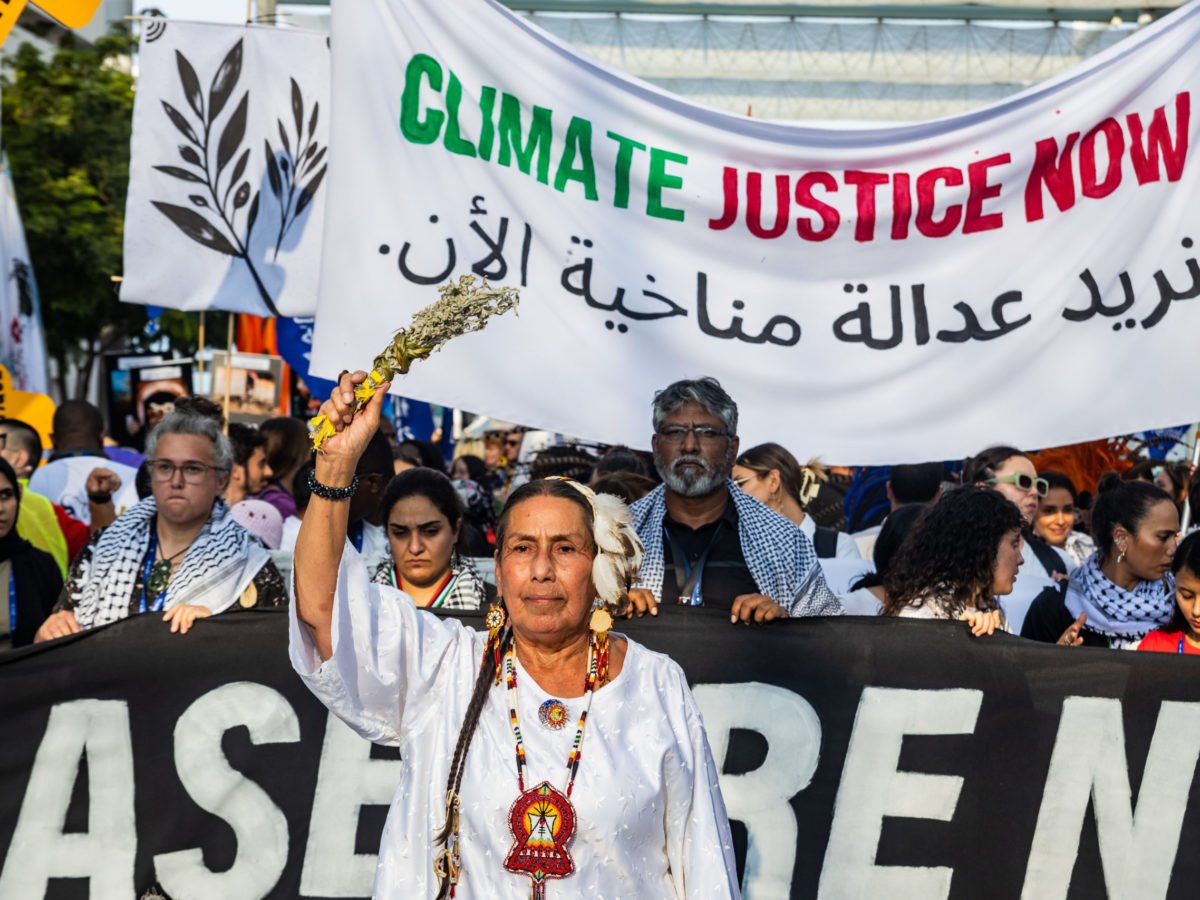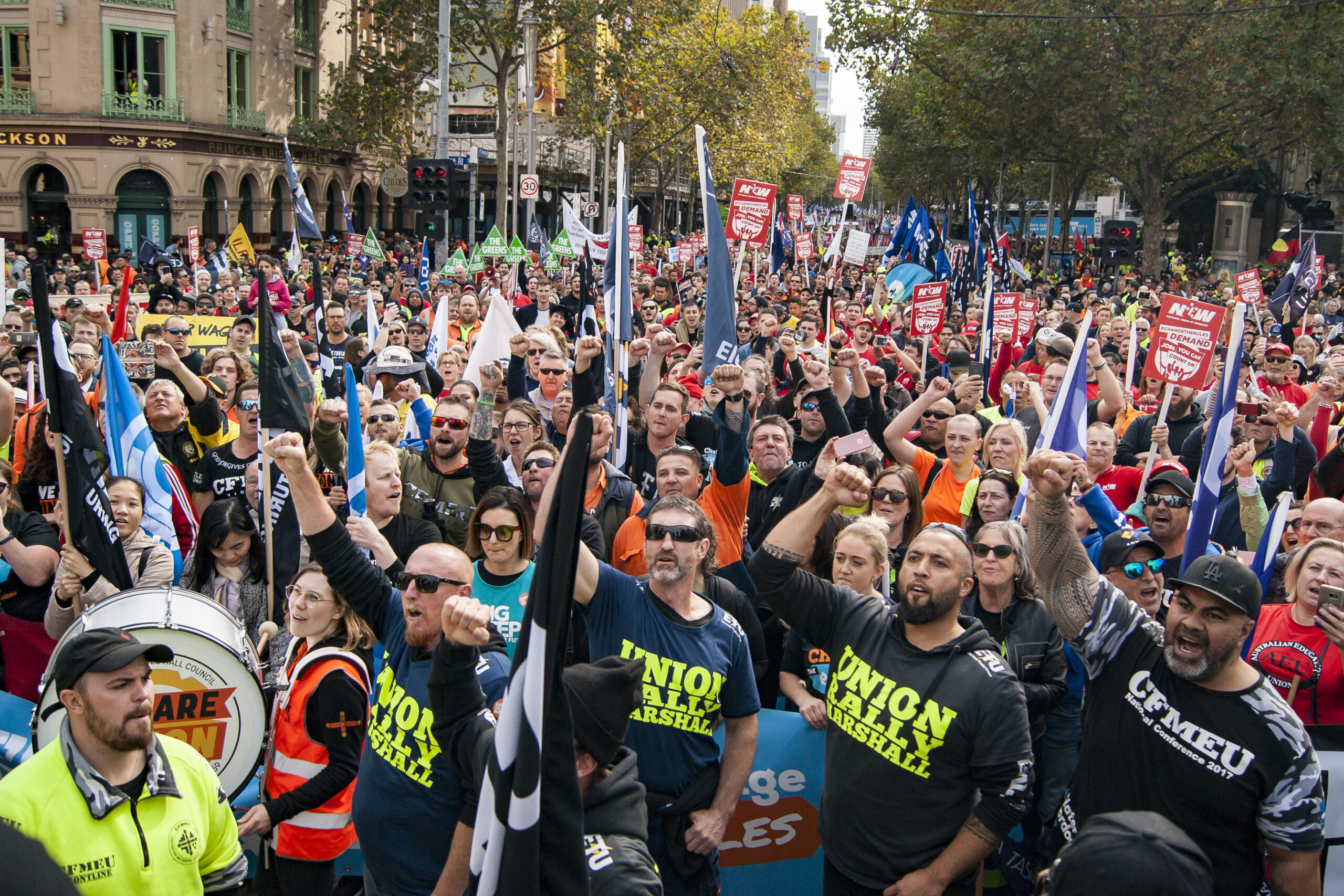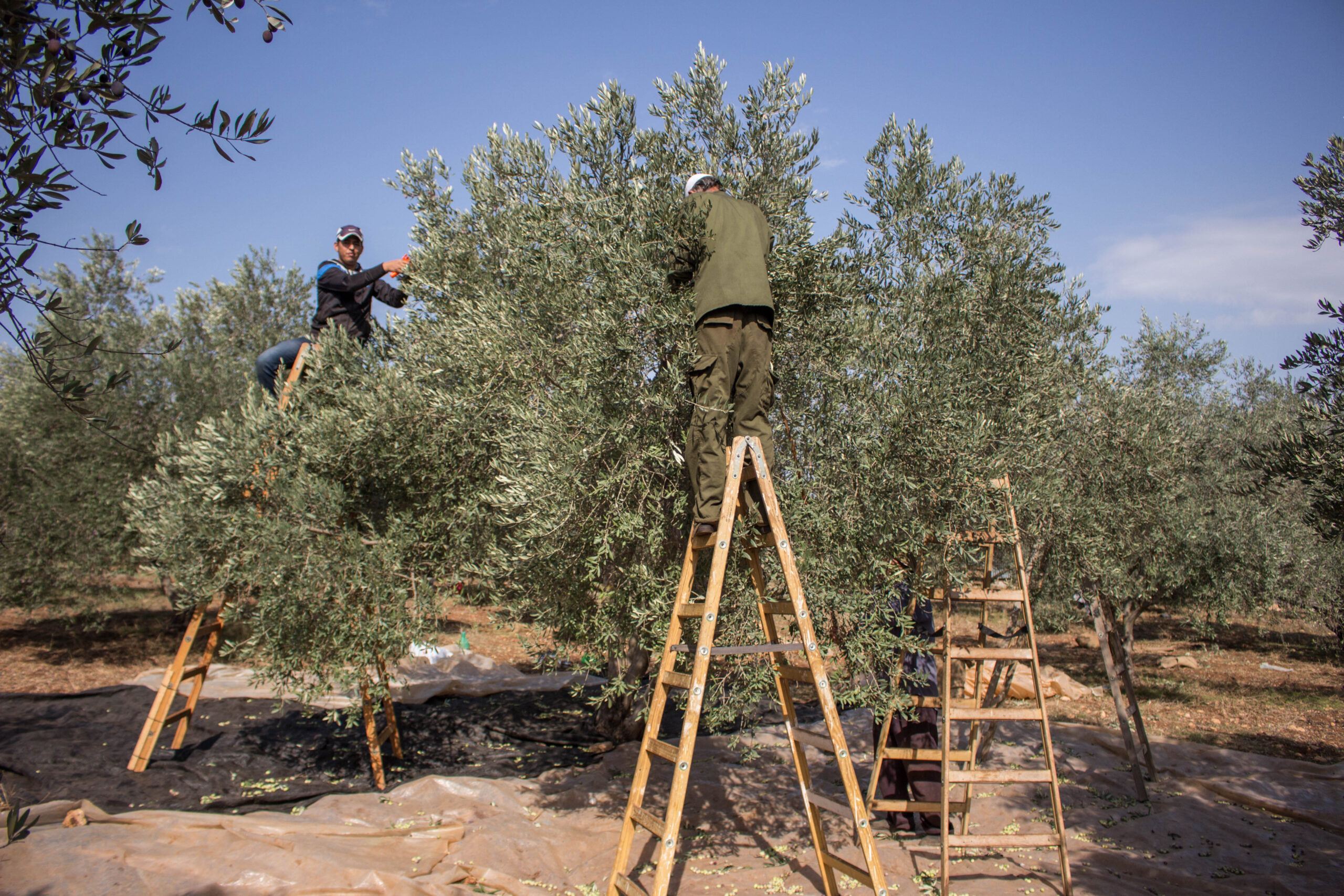The destruction of the natural environment in the Stalinist regimes through the twentieth-century made it understandable that, for many, Red and Green seemed incompatible. Think about the disaster at Chernobyl and the erosion of the Black Sea coast in the USSR, the catastophes of the ‘Great Leap Forward’ in China, the coal-fired pollution across Eastern Europe: Marx’s ‘productivism’, many environment thinkers argued, produced societies of ecological devastation.
Fast forward thirty years to our own era and the common sense has changed. Capitalism’s endless drive for growth and fossil-fuel driven expansion is pushing the planet towards levels of global temperature increases that threaten life as we know it. Mass extinctions – many in the past fifty years – and habitat loss are a part of the normal running of our world. Waste piles up. Extreme weather events kill many and leave many more homeless. Pacific Island communities face the prospect of their whole worlds disappearing under the sea. Everything has got worse since the Kyoto Protocols, even as the scientific consensus has been clearer and clearer to more and more people that we are destroying our planet with actions leading to climate change of a kind that will have irreversible, fatal, consequences. If the disaster of Stalinist state capitalism made many environmentalists distrust Marx in the twentieth century, the obvious failings of globalised capitalism in the twenty-first are bringing a new generation of thinkers and activists back to his work. ‘System Change Not Climate Change’ was a common slogan on the massive Student Strikes and marches for the climate across 2019-2021, and the idea that capitalism poses systematic problems for our species’ very viability is now, for many, axiomatic. The ‘capitalist system does not offer an alternative to the juggernaut of overproduction and overconsumption’ (p. 1), as Kohei Saito puts it in his important new book, Marx in the Anthropocene: Towards the Idea of Degrowth Communism (2023). ‘Capitalism’s systemic compulsion continues to employ fossil fuel consumption despite consistent warnings, knowledge and opposition’ (p. 1) Labor in Australia is planning ‘the largest expansion of fossil fuel extraction projects in Australian history’. Extremes of heat and cold across the Americas show already the chaos that is coming. The dairy industry in New Zealand continues to pollute waterways and to have its damage to the climate subsidised. What are we going to do?
Saito’s book offers rich resources for trying to answer this question. In Marx in the Anthropocene Saito builds on the work of his earlier book, Karl Marx’s Ecosocialism: Capital, Nature, and the Unfinished Critique of Political Economy (2017), to develop and extend ways of reading and thinking about Marx’s theoretical project in order better to be able to confront our ecological crisis today. Saito has spent years studying Marx’s manuscripts and pays particular attention to the research Marx carried out on ecology, non-European history, and Indigenous societies in the years after the publication of the first volume of Capital (1867). Marx published very little after Capital, and many commentators have downplayed the significance of his later writings. Saito, on the other hand, encourages us to see them as part of a wide-ranging inquiry into capitalism’s unsustainability. Far from being a side-topic for Marx, Saito convincingly shows, environment and ecology were at the heart of his thinking about what capitalism is and what it does. If some of Marx’s early writings, in the Communist Manifesto especially, shared Eurocentric assumptions and relied on the rhetoric of ‘progress’, his later works are much more open to thinking about capitalist development across the world, and are much more ambivalent about what ‘progress’ means, as well as being much more unambiguously hostile to the notion of capitalist ‘progress’. Out of careful reconstruction of and reflection on these later writings Saito proposes a theory of ecology in Marx that is much more systematic and thoroughgoing than other scholars have acknowledged. His book is in three parts. One is a reconstruction of Marx’s own writings and theories; one is a debate with what Saito calls a revived ‘utopian’ socialist current on ecology; and the third, looser, section sketches out what ‘degrowth communism’ might be.
Why does this matter? Saito’s book is often densely technical, and is weighed down in debates between Marxist scholars on philosophical and technical points. It is not a book for beginners to this topic. But it rewards patient reading and offers much for activists and revolutionaries to engage with and debate, because Saito’s Marx speaks directly to some of the most pressing issues facing us now. Everyone, it seems, agrees that the climate crisis matters, from the fossil fuel companies themselves, busy rebranding this century as ‘Beyond Petroleum’, to the trade union movement. Outright denialism is now a minority pursuit among the right-wing and the capitalist class generally. But all of this has had no effect on emissions, and things are still getting worse. Equally, the School Strikes for Climate were massive – some of the biggest protests New Zealand has ever seen – and yet they have faded away just as thoroughly, many of their early leaders now absorbed into the Green Party and parliamentary politics. When you garner praise from almost everyone, as the School Strikes did for a while, you threaten no-one. Climate politics seems to be at an impasse. How do we get where we need to be? Saito’s Marx is good to think with on this question.
Metabolism in the Ecological Crisis
Chapter One elaborates on the idea of the ‘metabolic rift’, a term from Marx developed in recent decades by John Bellamy Foster and Paul Burkett. ‘The metabolic interaction of humans with the rest of nature constitutes the basis of living’ (p. 23), as Saito summarises it, ‘but the capitalist way of organising human interactions with their ecosystems inevitably creates a great chasm in these processes and threatens both human and non-human beings’ (p. 23). Human waste in city sewage systems is a vivid, if disgusting, example of this, as is cow excrement ending up in rivers, slash from forestry clogging beaches, or soil erosion. One of the great values of Saito’s book is the way he makes clear the intimate connections between ecology and workers’ struggles. These connections exist at a profound, even philosophical level. As Saito points out ‘when value becomes the organising principle of metabolism between humans and nature, it cannot fully reflect the complexity of the biophysical metabolic process between them’ (p. 24). The ‘alienation of labour and of nature are mutually constitutive of each other’ (p. 24), wage labour being directed towards tasks that generate profit for capitalists rather than for human need, and nature being used in the process as a means for the generation of profit rather than as an end in itself for human sustenance and flourishing. Saito explores three different kinds of this mutually-reinforcing rift.
The first ‘is the material disruption of cyclical processes in natural metabolism under the regime of capital’ (p. 24). Phosphate mining and the plunder of Kiribati for fertiliser in New Zealand is a good, tragic example of this. Capitalist farming in New Zealand quite literally grew rich by stripping Banaba Island and other places in the Pacific of resources that had developed across thousands of years. From guano to resources for fertiliser, what was taken in space from those islands to these islands was also displaced in time, cyclical processes in both places being thrown dangerously out of balance by capitalist intervention. We can see similar things happening today with water use and dairy farming.
Secondly, the metabolic rift is a ‘spatial rift’ (p. 25). Urbanisation, and the driving of peasant populations in Europe and Indigenous peoples in colonised places off their land to become wage workers in large urban centres, concentrates people in cities and ‘necessitates the long-distance transport of products but also significantly increases the demand for agricultural products in large cities’ (p. 26). Food waste between farm and table; refrigeration; areas of fertile land being taken up by growing cities: all sorts of wicked logistical problems come along with this spatial rift, complicated enough without the whole process being organised along profit-maximising rather than human lines. Forty percent of the food supply of the United States goes to waste in restaurants, supermarkets, and homes. Getting adequate refrigeration in many African countries to allow food supplies to stabilise would bring with it substantial carbon emissions. Capitalism creates abundance of one kind, but waste in the very way it is created. ‘The spatial rift also means the concentration of wastes in the city, degrading its living conditions’ (p. 26).
The ‘third dimension of metabolic rift is the temporal rift’ as in capitalism ‘there emerges a rift between nature’s time and capital’s time. Capital constantly attempts to shorten its turnover time and maximise valorisation in a given time – the shortening of turnover time is an effective way of increasing the quantity of profit in the face of the decreasing rate of profit’ (p. 27). Capitalism is driven by the need for growth, competition between rival capitals, and the need to constantly try to increase profits. But ‘natural cycles exist independently of capital’s demands’ (p. 28). Capital, Saito sums up, ‘cannot produce without nature, but it also wishes that nature would vanish’ (p. 28). The forestry industry needs trees, but everywhere produces deforestation; the fishing industry relies on the stocks in the ocean, but everywhere drains them to levels that threaten the future of the fishing industry itself.
Saito’s exposition of Marx’s concept is very clear, and has the great advantage of showing just how much the ecological crisis is a question of the irrational organisation of this system rather than a question of personal choices. It does not matter how cleanly I live as an individual, and whether I never fly again, go vegan, recycle assiduously, or whatever else. Not only are my individual actions less than insignificant on a global scale, a focus on consumption mistakes its target. Capitalist production is what is driving ecological catastrophe, and the attempted capitalist fixes to its own metabolic rifts intensify the very problems they try to solve. Take the example of fuel efficiency. Cleaner engines and greater fuel efficiency have the effect, in a system geared towards production for profit rather than need, of increasing pollution. If a capitalist can get more outputs at less expense then of course she will: there is no natural need satisfied that leads production to stop. So what Saito calls the ‘technological shift’ (p. 30) at best displaces ecological problems. For sure, the scientific literature Marx studied is now out of date because the problems of soil exhaustion it examined are now ‘solved’. But these solutions, through ‘hormones, synthetic fertilisers, pesticides’ (p. 31) and so on merely deepen the metabolic rift. The ‘spatial shift’, meanwhile, creates ‘an externality by a geographic displacement of ecological burdens to another social group living somewhere else’ (p. 31). Sometimes this is just a kind of wishful thinking dressed up as hard-headed accounting, as with the Emissions Trading Scheme. Sometimes it is a case of dumping pure and simple, as richer countries send their waste elsewhere, or of ecological imperialism: think of Apple’s liberal, progressive image in US capitalism and its actual labour and environmental record in the production of iPhones. Finally, there is the ‘temporal shift’ (p. 33) caused by the very discrepancy between ‘nature’s time and capital’s time’ (p. 33). The melting of permanent ice in the Arctic would be a catastrophe for humanity, certainly; it would also open up shipping routes in the short term and so could be a source of profits, and thus also inter-imperialist rivalry and competition between states with stakes in the region. The big seven oil companies saw their profits surge in 2022. Catastrophe and crisis are a good time to be in business.
I have only sketched out the most basic summary of Saito’s reconstruction. What is valuable in his work is the richness of the treatment of each of these rifts and fixes, moving between contemporary examples, details in the writing of Marx, Engels and other writers in the Marxist tradition. The development of Marx’s thinking is of interest for historians of ideas, but Saito’s scholarship matters for a wider left-wing readership because it allows us to see how deep the connections are in his thinking between people and planet, labour as a human activity and labour’s alienation in capitalism’s rifts. Far from being a ‘Promethean’ figure or someone who gloried in capitalism’s productive powers above everything else, Marx, especially in his final decades, was clearly concerned with the destructiveness of the system and with ways in which human society might be organised to flourish, sustainably and democratically, without enduring capitalism’s catastrophic development. This matters now in debates about strategy we are having today because it shows we do not have to make a choice between, say, workers’ rights, incomes, and environmental protection, or between Indigenous land rights and working-class struggle. Making the connections clear and compelling is the work of politics; Saito helps this in the work of theory.
Against the New Utopianism
Saito’s way of setting out capitalism’s metabolic rift – and capitalism’s self-defeating ‘shifts’ that sustain profits but deepen the crisis – is useful also for showing how desperately we need anti-capitalist politics. Decades of environmental activism has been based either on (often very courageous) moral witness from a few or from the hope that, if enough awareness can be raised, business will change its ways. Jacinda Ardern, introducing climate legislation, talked of a ‘practical consensus’ to lock in decades’ worth of steps. But these problems, Saito shows, are built into the way the system operates. That’s the insight Marx offers us, and its what a hundred and fifty years of empirical research and experience since Capital’s publication demonstrates. If the way the world is currently organised is subordinate to private profit and endless growth for commodity exchange then, before too long, it will reach ecological limits in the climate, soil, and sea.
Plenty of capitalist ideology, in mainstream journalism, think tanks, government policy and the universities, tries to get around this by simple fantasising. Technologies as yet uninvented will save us. Carbon will be captured. Perhaps we will colonise Mars and start all over again. Maybe battery-powered planes and fleets of electric vehicles will solve our problems, never minding where the materials for the batteries are sourced from. Accumulation for accumulation’s sake can and must go on forever. Saito shows how suicidally foolish all of this is, and links it to his work following Marx’s own intellectual development. Reading Marx’s drafts before and after his work on Capital, Saito observes that
In the 1860s, when he consciously distanced himself from his earlier technocratic productivism, Marx was compelled to rethink his optimistic view of history and to reflect more seriously on its negative implications. This self-critical reflection took place as he investigated the material aspect of the production process unique to capitalist production, especially how the material world – human and non-human – is reorganised by capital’s initiative in favour of its own accumulation. This is because the increase of productive forces subordinate workers to the command of capital more effectively. If so, ‘relations of production’ and ‘productive forces’ cannot be simply separated as assumed in the traditional view of historical materialism. The development of productive forces of capital is dependent upon the thorough reorganisation of human metabolism with nature in the form of cooperation, division of labour and machinery. In this sense, the ‘mode of production’ expresses a particular social arrangement of the material elements of production. (p. 155)
Battery-powered robot recycling on Mars, in other words, is not going to save us, and what counts as ‘productive forces’ is social all the way through.
These insights for why we need a revolutionary overthrow of capitalism also lead Saito to criticise two tendencies on the left. The most serious is against the idea, on its own, of a Green New Deal as a way to save us. Of course there are reforms needed now that we should support and campaign for urgently: free public transport, say, or mass government intervention in housing, or an immediate end to mining on conservation land (and beyond). But, without tackling the ‘metabolic rift’ at the heart of capitalism, reforms within this system remain inadequate. Restoring proper passenger rail transport in New Zealand, for example, a laudable goal, will be better for the environment than our current reliance on private vehicles on roads. But rail construction is environmentally damaging, and high-speed rail overseas even worse, and our whole economy and transport system geared towards industries, from dairy to tourism, destroying the planet. ‘Sustainable’ is, when used to describe activity in a system geared towards unsustainable growth on its own terms, a meaningless phrase. When we debate ideas like the Green New Deal or its local equivalents we also need to be contesting the terms of the debate: what needs saved is our planet, not their system. Does a reform push us towards thinking about life over profit, or is it a way of making profit more secure? Saito helps us think with this challenge.
Saito also criticises, I think convincingly, what he calls new ‘utopian’ socialism in the form of calls for so-called ‘fully automated luxury communism’ or dreams of automisation freeing us for lives of drifting consumption. Let’s get real. Technology is not a neutral thing, but shaped by the political and economic order in its construction: Saito offers fascinating summaries of some histories of why it is coal won out over water as a way of driving capitalism. So their technology won’t save us. But also the metabolic rift is real. Any sober revolutionary socialist project that wants to be taken seriously by serious people needs to face the facts of climate catastrophe. Luxury, as we understand it now, from meat eating to international travel to air conditioning, is completely entangled with catastrophe. Left-wing austerity is not appealing, but neither is unfounded optimism that we can continue with the lifestyles of the Global North in the face of all available evidence. There are real, serious questions here: if international travel to Samoa, say, for tourism is a self-destructive habit a just world would end does this mean family connections across the Pacific must also be severed? What about air conditioning? Housing contributes a fifth of New Zealand’s emissions, and emissions from the construction industry have gone up significantly in the past decade. Something has to give. But, in turn, many thousands have died in heatwaves across globally in the past years, and decent shelter is a basic human demand. It is going to get hotter, storms are going to become more severe, the sick and elderly will be at risk. Climate change is happening now. How do we organise for it? Saito’s focus on ecology and ‘degrowth communism’ makes us ask these questions. They are difficult, and I think tragic, but make a more compelling place to start than the fantasy we need not worry.
What is degrowth?
What is degrowth communism? Saito readily admits that ‘Marx did not elaborate on the idea’ (p. 247) and his final chapters are the most speculative and fragmentary of the book. A few themes emerge: a stress on human labour (not necessarily capitalist work) ‘as a conscious mediating activity of the incessant metabolism between humans and nature’ (p. 219) as a guiding method for thinking about organisation; the need to rethink ‘abundance’ and ‘wealth’ (p. 216) in terms of true human needs rather than capitalist riches; and the importance of thinking of a truly humanist, liberated, meaningful future in any communism. Some will find this final section, in its vagueness, the least satisfying, but I appreciate Saito’s challenge to us. The consequences of emissions now, and over the past thirty years since the Kyoto Protocols, will shape the climate, and the planet, for decades to come. This will be the case even if capitalism is abolished and replaced with a truly human, socialist society globally very shortly. We will, regardless of everything else, be practising, urgently, adaptation and mitigation even as we transform the world. More of the Solomon Islands may disappear, Nauru, Kiribati and Tuvalu may all become uninhabitable. This is, in the highest degree, tragic, and we do ourselves a disservice, and make organising for revolution harder, if we downplay or ignore this tragic aspect. Saito’s call for a degrowth communism, as I understand it, tries to turn the socialist imagination fully to face this tragedy.
Criticisms
What is ‘degrowth’, though, for the millions of workers in the Global South still struggling for electrification, stable water or food supplies, decent health infrastructure? How do we think about human development without capitalist measures like growth? Saito can be frustratingly vague on important questions.
Not every book needs to be written as an introduction, and there are good primers on socialism and ecology elsewhere, but Saito’s style can sometimes be forbiddingly academic. By the time you have read Saito on Moore on Foster on Mészáros on Engels on Marx on ecology you may need to pause to gather your bearings. Some of this density is unavoidable, given the subject: Saito is, after all, carrying out a work of reconstruction. Some of it also more rigorous copy-editing might have picked up, and that is the fault of Cambridge University Press, who should have taken more care with a text this important, rather than the author.
Some of it, though, seems to me also to betray a lack of political focus. Apart from one cryptic and unpromising reference to a new ‘Popular Front in defence of the planet’ (p. 172) it is hard to get a sense of what Saito’s own political programme and affiliation might be. The Popular Front was a disaster for the fight against fascism; why would one against climate change work any better? Besides, Saito’s whole book shows why class interests cut across our shared fate as a species. Theory can be complex, and there are important books worth studying carefully that do not aim at popular audiences, but some of Saito’s detachment feels like a theoretical failing too because the issues he raises are so important. What do we do next? How are we to organise? How can we act? Those are questions in need of urgent debate amongst the rest of us.
Marx in the Anthropocene is a crucial intervention at a crucial time, setting out a Marx for our climate crisis and a way of thinking about the possibility of a human future beyond capitalism. It should be studied carefully and discussed by everyone serious about trying to avert the disaster capitalism has our species and our planet living through and towards.
—
Kohei Saito, Marx in the Anthropocene: Towards the Idea of Degrowth Communism (Cambridge University Press, 2023)









